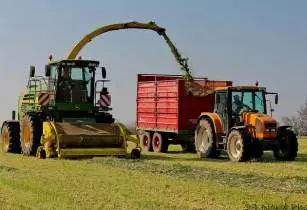Integrating sustainability in machine design will go a long way in ensuring environmental safety standards are maintained
A recently-published ISO standard on sustainability principles for tractors and machinery for agriculture and forestry will aid designers and manufacturers integrate best practices in machine design. Titled ISO 17989-1:2015, Tractors and machinery for agriculture and forestry – Sustainability – Part 1: Principles, the guide is specially applicable to equipment used in production of food, fibres, fuel and lumber for humans and livestock, stated the ISO report.
Currently, there are more than 450 types of machines being manufactured worldwide for a range of operations such as soil work, crop care, harvesting, tilling and seeding. The design of a product and its utility can have a definite impact on the environment within which it operates. If small- and medium-sized businesses, (which largely design machines) began to integrate tools and equipment specifically to design machines that are environment-friendly, the negative impact of vehicle emissions could reduce and considerably enhance performance as well.
A product’s design, and its use over its lifetime, can have a significant impact on the quality and sustainability of the environment in which it operates. Taking steps to reduce the impacts of a product at the design and development stage is an important factor in sustaining the environment. In this sense, designing for sustainability can be seen as a process (i.e. a set of considerations that are integrated into a product’s design and development) to help reduce the negative impacts of the product and improve its performance.
To ensure the standards are retained, the ISO guide provides seven steps -
· Determining stakeholders groups and ascertaining their claims
· Aligning the company’s policy
· Determining performance characteristics, indicators and measures reflecting these interests
· Optimising the performance characteristics through a continuous improvement process
· Reporting to stakeholders on the progress achieved
· Assessing and adapting targets and measures
This series of standards has been developed by technical committee ISO/TC 23, tractors and machinery for agriculture and forestry, under the stewardship of AFNOR, the ISO member for France.








